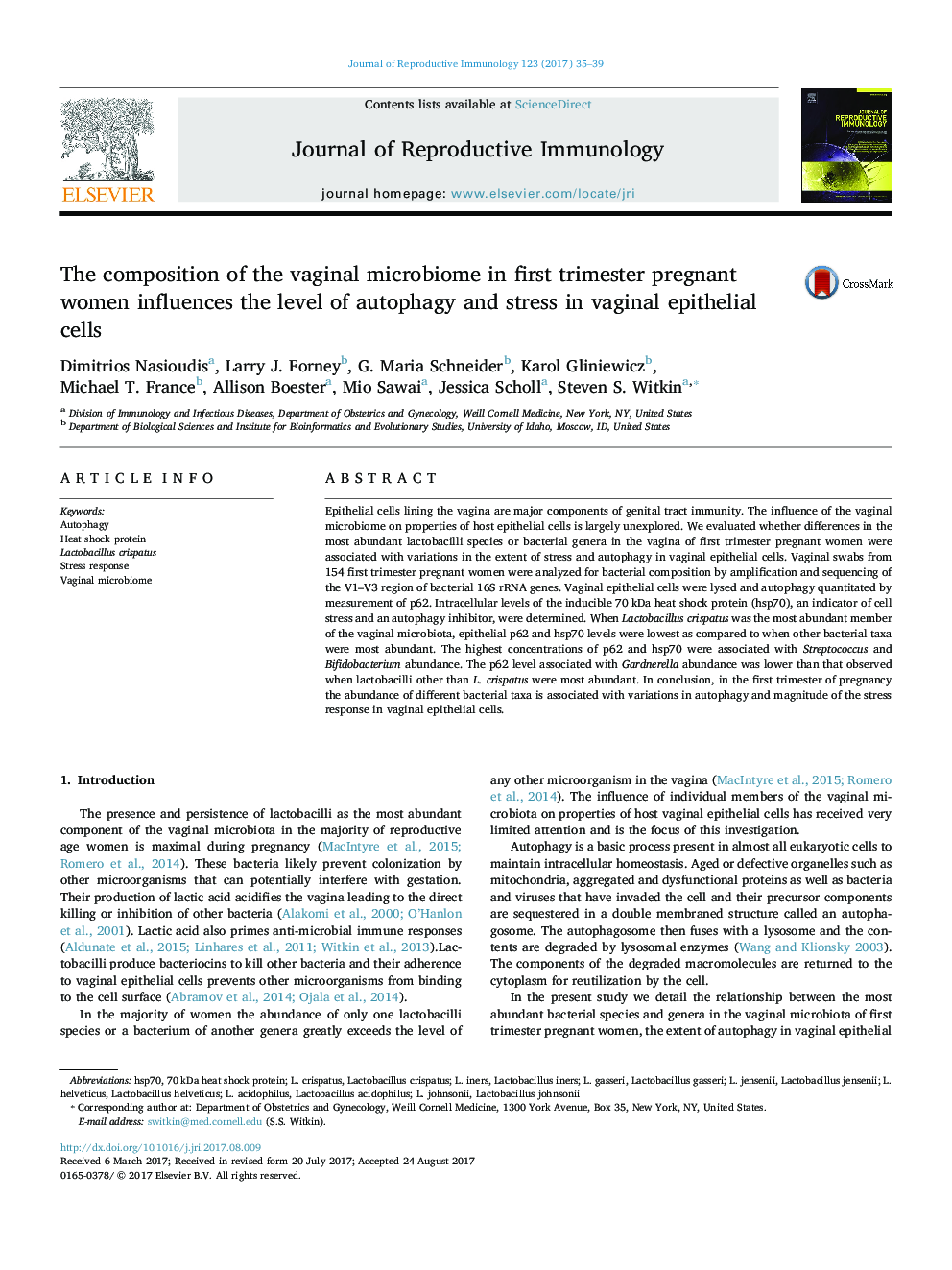| کد مقاله | کد نشریه | سال انتشار | مقاله انگلیسی | نسخه تمام متن |
|---|---|---|---|---|
| 5696441 | 1600689 | 2017 | 5 صفحه PDF | دانلود رایگان |
عنوان انگلیسی مقاله ISI
The composition of the vaginal microbiome in first trimester pregnant women influences the level of autophagy and stress in vaginal epithelial cells
ترجمه فارسی عنوان
ترکیب میکروبیوم واژینال در زنان باردار در سه ماهه اول، به میزان اتوفایگی و استرس در سلولهای اپیتلیال واژینال اثر می گذارد
دانلود مقاله + سفارش ترجمه
دانلود مقاله ISI انگلیسی
رایگان برای ایرانیان
کلمات کلیدی
hsp70Lactobacillus helveticusLactobacillus crispatusL. helveticusL. acidophilusLactobacillus johnsoniiLactobacillus inersAutophagy - اتوفاژیLactobacillus acidophilus - لاکتوباسیلوس اسیدوفیلوسLactobacillus gasseri - لاکتوباسیلوس گاسریVaginal microbiome - میکروبیوم واژینالStress response - پاسخ به استرسHeat shock protein - پروتئین شوک حرارت
موضوعات مرتبط
علوم زیستی و بیوفناوری
ایمنی شناسی و میکروب شناسی
ایمونولوژی
چکیده انگلیسی
Epithelial cells lining the vagina are major components of genital tract immunity. The influence of the vaginal microbiome on properties of host epithelial cells is largely unexplored. We evaluated whether differences in the most abundant lactobacilli species or bacterial genera in the vagina of first trimester pregnant women were associated with variations in the extent of stress and autophagy in vaginal epithelial cells. Vaginal swabs from 154 first trimester pregnant women were analyzed for bacterial composition by amplification and sequencing of the V1-V3 region of bacterial 16S rRNA genes. Vaginal epithelial cells were lysed and autophagy quantitated by measurement of p62. Intracellular levels of the inducible 70Â kDa heat shock protein (hsp70), an indicator of cell stress and an autophagy inhibitor, were determined. When Lactobacillus crispatus was the most abundant member of the vaginal microbiota, epithelial p62 and hsp70 levels were lowest as compared to when other bacterial taxa were most abundant. The highest concentrations of p62 and hsp70 were associated with Streptococcus and Bifidobacterium abundance. The p62 level associated with Gardnerella abundance was lower than that observed when lactobacilli other than L. crispatus were most abundant. In conclusion, in the first trimester of pregnancy the abundance of different bacterial taxa is associated with variations in autophagy and magnitude of the stress response in vaginal epithelial cells.
ناشر
Database: Elsevier - ScienceDirect (ساینس دایرکت)
Journal: Journal of Reproductive Immunology - Volume 123, September 2017, Pages 35-39
Journal: Journal of Reproductive Immunology - Volume 123, September 2017, Pages 35-39
نویسندگان
Dimitrios Nasioudis, Larry J. Forney, G. Maria Schneider, Karol Gliniewicz, Michael T. France, Allison Boester, Mio Sawai, Jessica Scholl, Steven S. Witkin,
